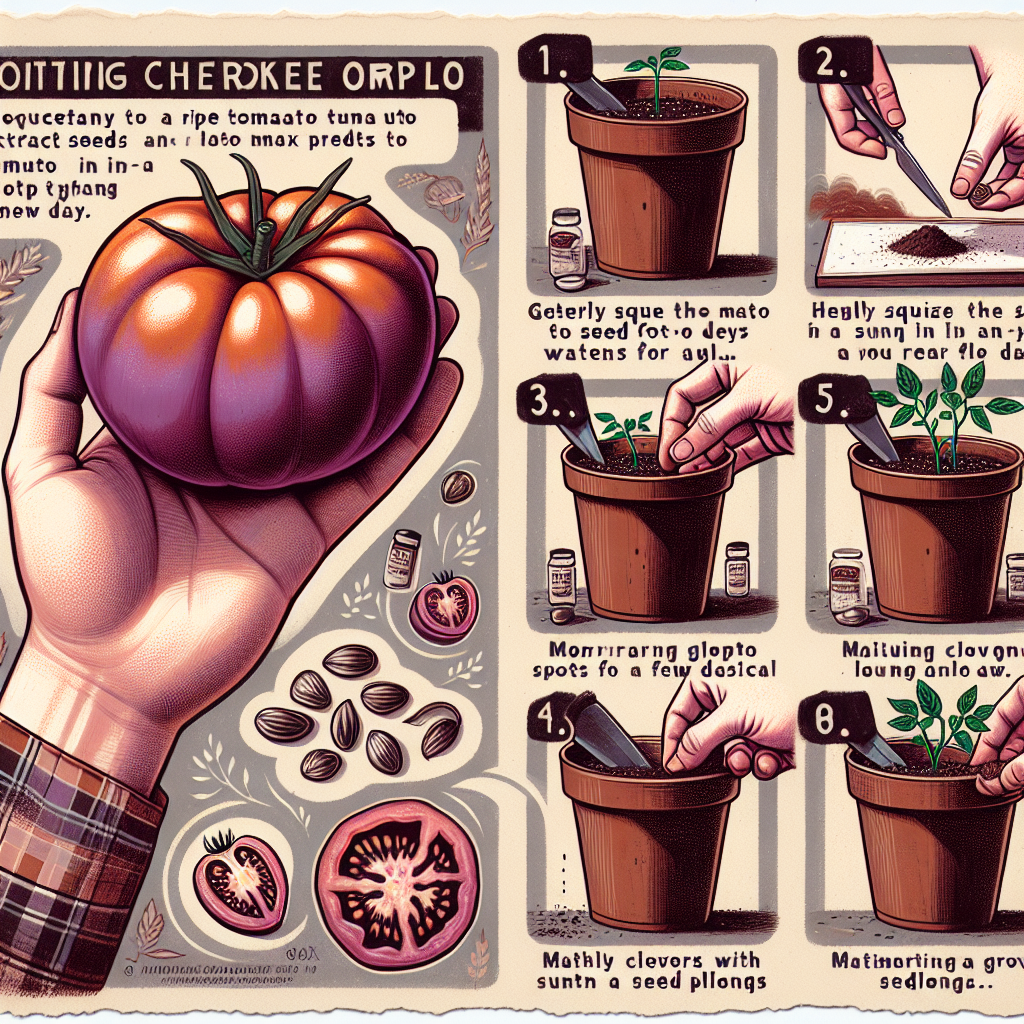
How to plant cherokee purple tomato
Introduction to Cherokee Purple Tomatoes
Among heirloom tomatoes, the Cherokee Purple variety stands out for its rich flavor and unique appearance. This indeterminate tomato plant is cherished by gardeners and chefs alike for its deep purple color and a taste that’s often described as sweet and robust, making it a favorite in salads, sauces, and fresh salsas. If you’re considering adding this delightful variety to your garden, understanding how to plant Cherokee Purple tomatoes will set you on the right path to a fruitful harvest.
Understanding Cherokee Purple Tomatoes
Before diving into the practical aspects of planting, it’s essential to understand **what makes Cherokee Purple tomatoes special**. Originally cultivated by the Cherokee Nation, these tomatoes are renowned not just for their taste but also for their historical significance. They are a mid to late-season variety, taking approximately 80 to 90 days from planting to harvest. Their juicy flesh is complemented by a smoky, sweet flavor, making them a culinary delight.
Choosing the Right Location
Selecting the proper location for planting is a crucial first step. Cherokee Purple tomatoes thrive in warm, sunny environments. Here are some factors to consider:
- Sunlight: Aim for at least 6-8 hours of direct sunlight each day.
- Soil Quality: Well-draining soil rich in organic matter is ideal.
- Space: Ensure ample room between plants to promote airflow.
Soil Preparation
The foundation of healthy plants is found in the soil. To prepare the soil for planting Cherokee Purple tomatoes, follow these steps:
- Test your soil pH, aiming for a range of 6.0 to 6.8.
- Incorporate organic matter like compost, which will improve soil structure and nutrient content.
- Amend the soil with a balanced fertilizer before planting.
Sowing Seeds vs. Transplanting
You can select to grow Cherokee Purple tomatoes from seeds or purchase established plants from a local nursery. Here’s a breakdown of both methods:
Starting from Seeds
For those who choose to sow seeds, timing is vital:
- Start seeds indoors 6-8 weeks before the last expected frost date.
- Use seed trays and high-quality seed-starting mix.
- Keep the soil moist and warm until the seeds germinate.
Transplanting Seedlings
If you buy seedlings, check the following:
- Look for sturdy plants that are about 6-10 inches tall.
- Ensure they have a healthy root system and are acclimatized to outdoor conditions.
How to Plant Cherokee Purple Tomato Seedlings
Once your seedlings are ready, you’re prepared to plant them in your garden or containers. Here’s how to plant Cherokee Purple tomatoes effectively:
Planting Process
- Digging the Hole: Create holes that are about 24-36 inches apart to allow room for growth. Depth should be approximately 2-3 inches deeper than the current root structure.
- Adding Nutrients: Mix in organic compost or a small amount of slow-release fertilizer to the soil in the hole.
- Transplanting: Gently remove the seedling from its pot and place it in the hole. Bury it deeply, up to the first set of leaves, to encourage a strong root system.
Watering and Maintenance
After planting, proper care is essential for healthy growth. Here are some tips on watering and maintaining your Cherokee Purple tomatoes:
Watering Tips
- Water deeply but infrequently to encourage deep root growth.
- Aim for approximately 1-2 inches of water per week, adjusting for rainfall.
- Water early in the morning to minimize evaporation.
Supporting Your Plants
Cherokee Purple tomatoes are indeterminate, meaning they continue to grow and produce throughout the season. Implementing support as your plants grow is vital:
- Cages: Use tomato cages to support the plant and keep fruit off the ground.
- Stakes: Consider staking for additional support, especially in windy areas.
- Pruning: Regularly prune suckers and excess foliage to improve air circulation.
Fertility and Pest Management
Maintaining healthy soil fertility is crucial for flourishing plants. Here are some additional considerations regarding fertilization and dealing with pests:
Fertilization
After a month of growth, it’s time to begin a regular fertilization schedule:
- Apply a balanced liquid fertilizer every 2-4 weeks.
- Consider using organic options like fish emulsion or seaweed extract.
Pest and Disease Control
Keep a vigilant eye on potential pests and diseases that can affect Cherokee Purple tomatoes:
- Pests: Watch for aphids, whiteflies, and spider mites.
- Diseases: Look out for blight, leaf spots, and blossom end rot.
- Utilize organic remedies when possible, such as neem oil for pests or crop rotation to prevent diseases.
Harvesting Cherokee Purple Tomatoes
After months of care, it’s finally time for the rewarding experience of harvesting your Cherokee Purple tomatoes. Here’s how to determine when they are ripe:
Signs of Ripeness
- The fruit should be firm but yield slightly to pressure.
- Color will change from green to a deep, dusky purple with hints of brown.
- Use clippers or scissors to harvest to avoid damaging the plant.
Cooking with Cherokee Purple Tomatoes
Once you harvest your Cherokee Purple tomatoes, the culinary possibilities are endless. Their unique flavor profile makes them versatile for a variety of dishes:
Delicious Recipes
- Caprese Salad: Layer fresh mozzarella, basil, and thin slices of Cherokee Purple tomatoes, drizzled with balsamic reduction.
- Fresh Salsa: Combine diced tomatoes with onion, cilantro, lime juice, and jalapeños for a refreshing salsa.
- Tomato Sauce: Use for flavorful, rich tomato sauce by simmering with garlic and herbs.
Conclusion
Planting Cherokee Purple tomatoes is a rewarding endeavor that offers both gardening pleasure and delicious returns. By following the outlined steps for planting, maintaining, and harvesting these unique heirlooms, you’re setting yourself up for success. Remember, patience is key when growing tomatoes, as the wait for that first bite of sweet, smoky flavor will be well worth it. Happy gardening!
By Guest, Published on August 25th, 2024